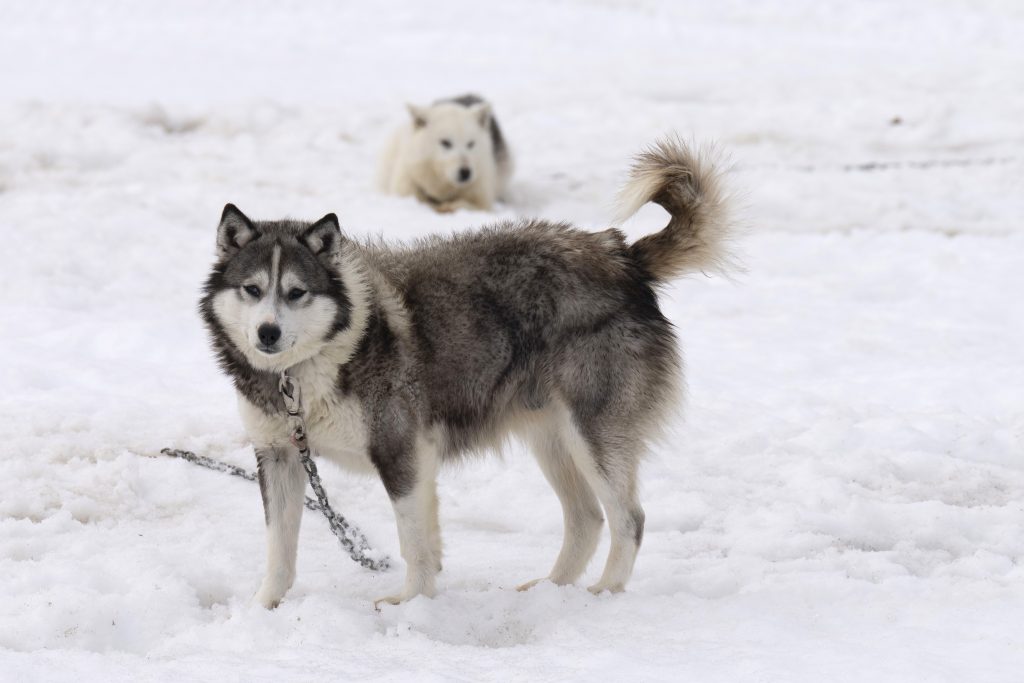SPCA wants more regulations against dog sled owners in Quebec

Posted November 7, 2024 11:33 am.
The SPCA is calling for stricter regulations towards dog sledding in Quebec.
According to the animal rights group, they claim that most sled dogs are kept in uninhabitable conditions, with several cases alluding to animal cruelty.
They’re also asking the public to sign a petition to help gain stricter laws for the industry.
The SPAC noted that most dogs in this industry spend nearly their entire lives tied to the end of a chain (tethering) and are unable to move freely.
“Dogs are social animals whose welfare depends on being able to have normal contact with other members of their species,” said Veterinary Behaviorist and chair of the Animal Welfare Working Group Dr. Enid Stiles. “By preventing dogs from engaging in behaviours that are critical to their mental well-being, tethering can lead to the development of stereotypical behaviours or compulsive disorders – both of which are signs of psychological distress. This is also the case for dogs who are tethered in groups, such as sled dogs, since healthy socialization requires unrestrained physical contact and play, which is impossible when they are tethered.”
Dog sledding is a popular winter activity in Quebec, especially among tourists – with over 130 sled dog facilities throughout the province and over 5,000 dogs put to work.
The regions with the most active facilities include Saguenay-Lac-Saint-Jean, Lanaudière, Capitale-Nationale, Mauricie and Laurentides.
However, a small number of dogs within the industry are spayed or neutered, which results in unwanted litters and puppies being killed.
Also, nearly 30 dog sled facilities in Quebec have more than 50 dogs each, with some totalling 200 dogs. The SPCA says that overcrowding leads to neglect, and a lack of care or attention towards the dogs.
Several high-profile cases in recent years have exposed the dog sledding industry.
“On June 7, the owner and an employee of Île-d’Orléans-based Expédition Mi-Loup were convicted of animal cruelty,” reads a press release by the SPCA. “More specifically, the owner was found guilty on three counts of willfully killing, maiming, wounding, poisoning, or injuring dogs, causing unnecessary suffering to animals, and neglecting to properly feed and care for the dogs under his care. In 2022, social media posts alleged that Chenil La Poursuite in Lévis was mistreating its dogs which eventually led the MAPAQ to seize 19 dogs from the facility.”
After several years of service, older dogs or those deemed unfit to pull a sled are often killed or die of old age on a chain.
“When they become too old to work, or unfit for any other reason, they should be allowed to end their days in a loving home. It’s the least they deserve after many years of service,” said the animal rights group.
The SPCA argues that there are not enough regulations in place to help dogs in the industry.
Currently, sled dog facilities fall under the general standards of the Animal Welfare and Safety Act and the Regulation Respecting the Welfare and Safety of Domestic Companion Animals and Equines – which apply to all dogs, including sled dogs, but contains several loopholes.
“For example, it allows dogs to be chained for 23 hours a day. Also, it imposes a maximum limit of 50 animals per facility only for commercial breeders; no limit is imposed on sled dog establishments that do not engage in commercial breeding,” said the SPCA.
Some of their proposed regulations include mandatory sterilization for non-breeding dogs, prohibit the use of tethering as a primary method of housing, a maximum number of 50 dogs per facility and a retirement program for older or unfit dogs.
The SPCA also wants these standards enforced by the ministère de l’Agriculture, des Pêcheries et de l’Alimentation du Québec (MAPAQ) in several ways:
-Sled dog facilities should be subject to several inspections per year, without prior notice, including at least one visit during the summer season.
-Permits suspended or revoked in the event of non-compliance, and then the dogs should be seized and removed from the facility.








